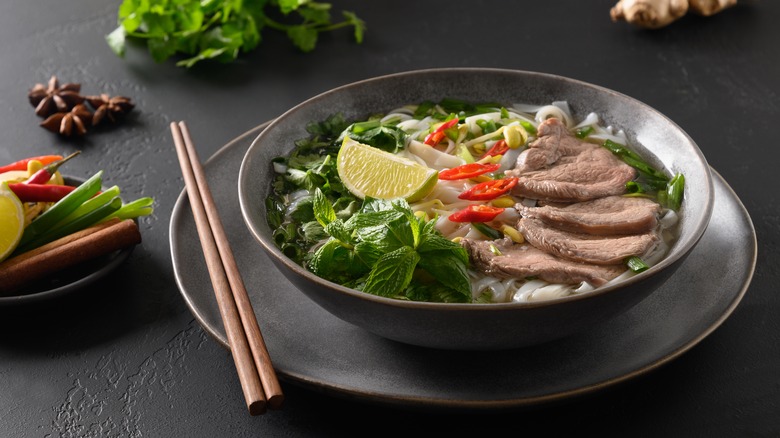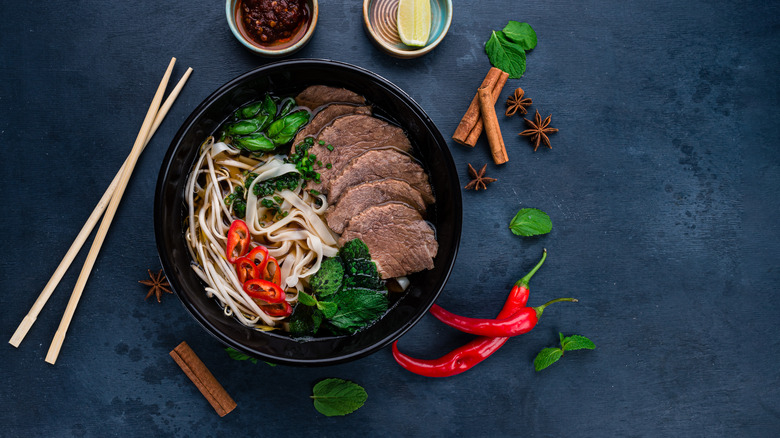Why It's Important To Slice Beef Super Thin When Making Pho
Mention Vietnamese food and pho – a beloved noodle dish known for its exquisite mix of flavors, with delicate pho noodles ("bánh"), rich bone broth, thinly sliced beef, and fresh herbs — instantly comes to mind. If you want to make it at home, there are a few things that you'll have to pay attention to, namely, the way you prepare the beef.
Technically, you can use beef of any thickness for pho, but the traditional and most popular way is to use thinly sliced beef. How thin, you ask? No more than a quarter inch thick. But this isn't just a stylistic choice or a culinary tradition. The way the beef is prepared is essential for the dish's success. In the most popular style of pho, known as "pho tái" or "rare beef pho," you get a steaming hot bowl of broth with noodles, along with several slices of raw beef. The beef slices are dipped straight into the hot broth in the bowl, which flash-cooks the meat, resulting in exceptionally juicy beef slices. If the beef is too thick, it might end up undercooked or unevenly cooked when prepared this way.
The thin beef slices also contribute to the tasting experience by being more tender and easier to eat. Pho should not be prepared like a steak; chewy meat is not desirable. Instead, more succulent is better — even in "pho chín" or "well-done pho" with fully-cooked beef instead of raw.
The best way to achieve paper-thin beef slices for pho
In Vietnam, the proper way to slice beef is considered a trade secret from one pho vendor to the other. But no worries, you can get pretty close with some practice. The first step is getting the right tool: a very sharp knife. This ensures clean, precise cuts without tearing the meat. Vietnamese pho vendors sharpen their knives constantly for this reason.
Next, let's talk about the beef. If you're making "rare beef pho," go for the filet. For "well-done pho," choose boneless shank or brisket. But here's the trick: You want the beef to be partially frozen. If it's at fridge temperature, pop it in the freezer for about 20 or 30 minutes to firm it up. Just don't leave it in there for more than 30 minutes, or it might freeze solid. The firmer meat will take to the knife a lot better and be easier to slice.
When it's time to start slicing, use a gentle, sawing motion to create thin, even slices. Most importantly, make sure to angle your cuts against the grain of the meat. If you cut parallel to the grain, you'll end up with long muscle fibers that are really tough to cook through. Slicing against the grain makes the muscle fibers shorter, and that means your beef will turn out more tender once it's cooked.

